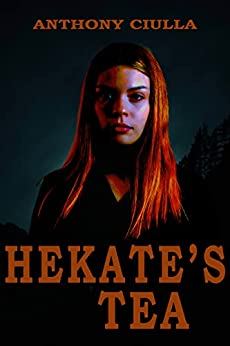Title: The Sigsbee Deep
Author: Richard J. Miller
Date: 2021
Publisher: my copy is self-published
ISBN: my copy shows none
Length: 162 e-pages
Quote: “The Sigsbee Deep is over fourteen thousand
feet, straight down. First, there is the corona, an area of two to three thousand
feet, then the falloff into the Deep itself—it might as well be bottomless.”
That’s what the characters in this novel are
facing in a hypothetical 2052 where Al Gore’s dystopian fantasies from the
1990s are finally starting to become real.
It’s science fiction, of course. Hard science, which is why so many
people in an online book review network felt unqualified to review this book.
At least I’ve read enough science to tell you that I’m not really qualified to
review this book.
The geology is admittedly weak, postulating a new
seismic fault that produces a series of earthquakes in Florida. In the
hypothetical 2040s most of the coastal cities are wiped off the map, though
low-lying cities near the coast, including Washington and St. Petersburg,
Florida, are still above water. Early in the novel a big earthquake separates
St. Petersburg from Tampa, then Pinellas Park from St. Petersburg.
(Pinellas Park is the suburb of St. Pete where the
relatives I call “Aunt Dotty and Uncle Pete” lived, and is the part of Florida
of which I have clear, detailed memories. In hypothetical 2052 some buildings
have apparently survived but, improbably, the little tract houses of which the
suburb-town mostly consists have been re-greened back into farms where people
can raise enough crops to live on. Presumably the destruction of towns on the
other side of Florida has kept people from pouring into increasingly shabby
tract houses as the retirees have grown old and died. On a map of the Gulf
Coast Pinellas Park can be described as sitting on a tiny “Pinellas Peninsula,”
a little crook of land at the south end of the Tampa Bay; if separated from the
main peninsula that is Florida, this mini-peninsula would become the sort of tiny island that could easily slide all
the way down into the ocean, as, in this novel, it’s doing.)
The biology is unadmittedly even weaker: In an
improbably re-greened suburb-town in central Florida, “global climate change”
is as real as the local warming effect feels to people who live there, sea
levels have risen, that’s what’s altering the shape of the ocean floor, but
people are raising corn and unable to get coffee. If Florida had warmed up that
much, coffee would probably grow better than corn...and the people struggling
to get off their island before it sinks would be more malnourished for that
reason.(The giant fish on the cover is an exaggeration of the concept;
according to the text the mutant fish called Krake gape only three feet wide,
but they’re big enough to eat humans and attack boats, like sharks, in hope of
dislodging humans.)
The psychology is hopeless: The protagonists are
multiracial, their antagonist is a White racist straight out of 1952, the protagonists have never done
any shooting, the antagonist (true to stereotype) shoots constantly, yet when
things reach that point the old Hollywood cliché kicks in and zaps the baddie’s
well-practiced marksmanship. Good luck to anyone seriously counting on that
effect to win any sort of fight or contest. David killed Goliath, but not the
second or third time he’d ever taken a good look at a slingshot.
But good science fiction can use ideas more
scientifically unsound than those, if it’s well written fiction (which The Sigsbee Deep is, reasonably) and if
the science on which the story is based is not geology, biology, or psychology.
Often stories like that focus on astrophysics—“space operas,” if they’re bad
fiction; The Sigsbee Deep ventures
into more debatable territory by focussing on mechanical science. Mays Jackson’s ability to reunite himself and his
children with their mother depends on his ability to salvage junk from a
conveniently located motor vehicle graveyard and build a working solar-powered
submarine.
So it’s real, hard-core, Jules Verne type science
fiction. What makes Jules Verne great is not that his prose style is
extraordinary; it’s clear and readable, in English translation or in the
original French, but nobody raves over his ability to turn a phrase. It’s not
that his characterizations are full of brilliant insights; his characters range
from stereotypes to stick figures. It’s that his speculative engineering read
well enough to interest real engineers in building the gadgets about which
Verne fantasized, and, with some tweaking and fine-tuning, several of them work.
The Sigsbee
Deep begs to be read by real engineers and tested, so that, if people do
really need to evacuate any island fast, for any reason, they could have the option of building
solar-powered submarines. With or without spikes to kill attacking sharks.
Meanwhile, since family problems aren’t the topic
of the story, we get a lovely, Little
House on the Prairie-like picture of a faithful husband and two
hardworking, uncomplaining, tantrum-free teenagers. And, as a special treat for
baby-boomers, the third and fourth generations after us are able to bond by
laughing at, but dancing along with, an improbably preserved recording of Elvis
Presley’s “All Shook Up.”
Like many good science fiction stories this one’s
plot boils down to a male fantasy of singlehandedly saving at least the part of
the planet the hero cares about from super-dangers, and, if the science is
sound, nobody minds. So I can’t judge this novel. All I can say is that I’d
like to find out about the science in this fiction.




